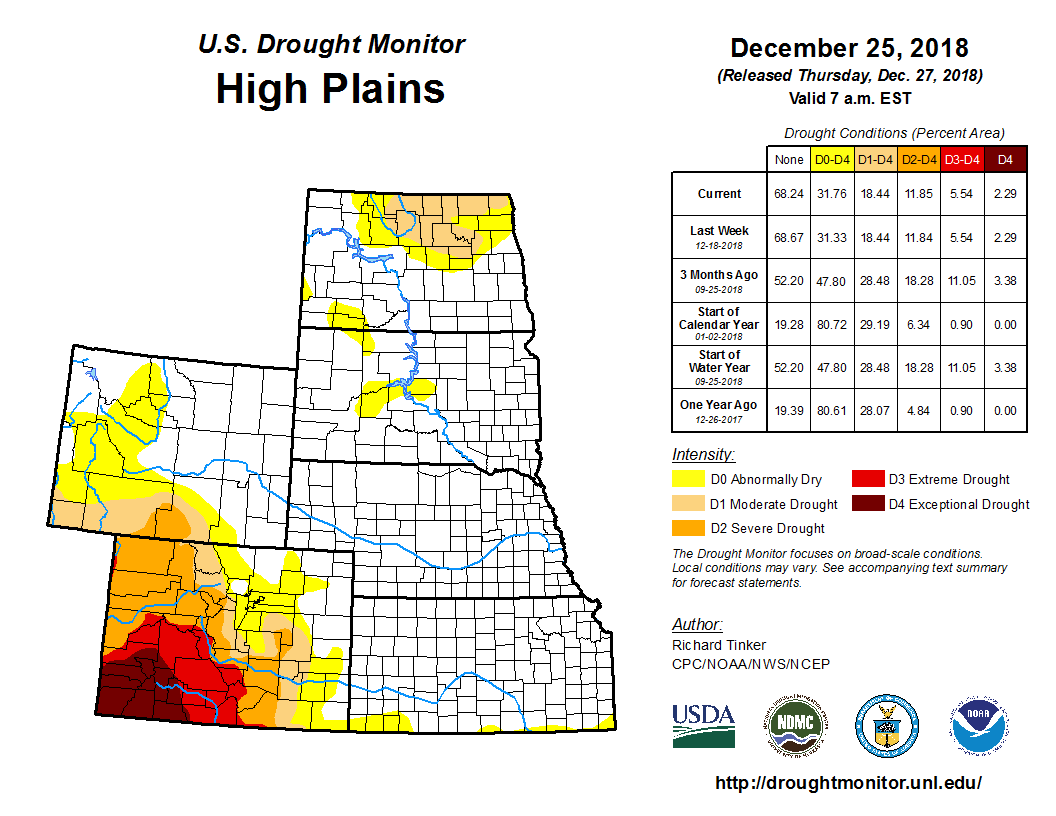According to the U.S. Drought Monitor for Dec. 25 released Dec. 27, in the High Plains light precipitation at best (to 0.5 inch in spots) kept dryness and drought unchanged in the northern Plains. Farther south, the dryness farther to the south and east began to encroach on Kansas, but D0 expansion was only expanded into a small section in the southwestern part of the state this week. Moisture deficits have been increasing elsewhere across the southern tier of the state, and the region will be closely monitored for the possible expansion of D0 next week.
Farther west, only spotty light precipitation was observed across Wyoming and Colorado, keeping the large areas of dryness and drought there intact. Much of the D3 and D4 areas in Colorado have accumulated precipitation deficits of 9 to over 15 inches in the last 6 months, and substantial shortfalls date back more than a year in most of those regions.
In the Midwest, dryness and drought is limited to a small area of D0 in northwestern Minnesota, which was unchanged this week, and farther south in an area extending across west-central and southwestern Missouri. D1is confined to a small section of southwestern Missouri covering parts of six counties. Deficits there generally range from 6 to 12 inches in the last six months, and between 2 and 5 inches since late October. Farther north, D0 expanded to cover most of west-central Missouri. The last 60 days have seen 2 to 3 inches less precipitation than normal in the new D0 region.
The continued dryness in parts of Deep South Texas, the Texas Panhandle, and Oklahoma prompted the expansion of D0 conditions westward through Zapata County in Deep South Texas, and northeastward to cover the central and eastern Texas Panhandle, the Oklahoma Panhandle, and approximately the northwestern half of the remainder of Oklahoma. Most of these areas reported near or less than half of normal precipitation since late October, and deficits of 2 to 4 inches accumulated in north-central and northeastern Oklahoma during this period.
Dryness and drought have been most prolonged in northeastern Oklahoma and adjacent Arkansas, where the depiction was not changed. Many sites reported 6 to locally 12 inches less precipitation than normal since early summer.



